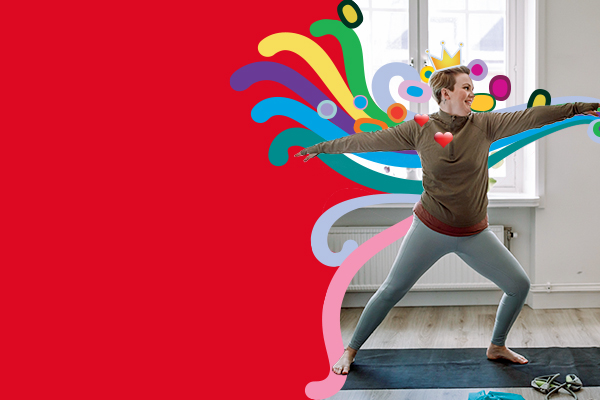-
As an Olympic sports physiotherapist, author of a book on reducing back pain and inventor of the self-treatment products BakBall and BackRest, Mark Alexander believes in making small changes to our daily routine to help lessen and prevent stiffness and soreness.
Here are his top tips for caring for your neck and back.
1. Exercise daily
Try to exercise for a minimum of 30 minutes every day to fire up the muscles that protect your spine.
2. Take regular stretch breaks
Stand up and stretch every 30 minutes while sitting to counteract prolonged sitting and slouched postures. Tip: set an alarm on Outlook so you remember.
3. Stretch out the chest
To reverse the hunched position of sitting, stretch out the chest muscles by reaching your arms out wide (such as through a doorway) for one minute every day.
4. Extend the spine
Arch backwards to stretch out the spine for one minute every day. A good way to do this is by arching back over your chair, lying over Swiss balls, foam rollers, BakBalls etc.
5. Work on your core
Strengthen the abdominal and back muscles to stabilise the core and hold yourself up in good upright postures.
6. Go gentle in the morning
Take it easy when you’re getting out of bed, washing your hair or driving in the mornings, as body structures tend to be less flexible and more prone to injury in the morning.
7. Lift safely
Ensure you lift things by bending your knees, keeping your back straight and keeping the items close to you (that is, held against you touching your stomach, rather than away from your body, which increases the strain).
8. Rotate your mattress
Every time you wash your sheets, rotate your mattress to a different one of the four possible positions to ensure even wearing and support.(Use two people and remember to lift correctly!)
9. Use the right pillow
Make sure you have a supportive and comfortable pillow that suits the way you sleep. If you sleep on your side, use a thicker pillow; if you sleep on your belly, choose a narrower pillow.
10. Build up your exercise slowly
If you’re starting from a lower level of activity and exercise, build up gradually to prevent boom/bust cycle – instead of going right into three hours of intense gardening and wondering why your back hurts!
Mark’s self-treatment device for back pain, the BakBall, and his book, Beating Back Pain: A Sports Physiotherapist's Guide to Relief, are available at bakballs.com
10 tips for reducing back and neck pain at work

-
How to set up your bedroom for better sleep
The sleep experts share some secrets.
-
5 healthy habits (and how to keep them)
New Year's resolutions are easy to make and hard to keep. Discover how to make healthy habits for 2024.
-
How to feel more connected this festive season
Feeling stressed or lonely this festive season?
-
Life’s a beach
If you want to take it easy at the beach, start by making the trip easier on yourself. Cameron Williams reveals the discoveries that made his time at the beach more enjoyable.
-
Learn how small bursts of movement can have a positive impact on employee wellbeing
-
How to do a digital detox
Reduce screen time with a digital detox, and improve your mental health and wellbeing.
Subscribe to receive the best from Live Better every week. Healthy recipes, exercise tips and activities, offers and promotions – everything to help you eat, move and feel better.
By clicking sign up I understand and agree to Medibank's privacy policy






